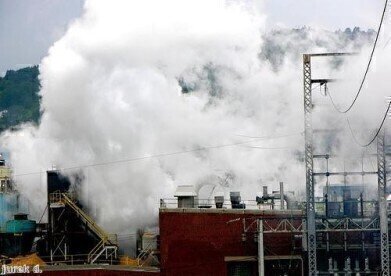Air Monitoring
Cows, Coal and Scrap: Where Methane Emissions Come From
Nov 29 2021
One of the most important and ground-breaking agreements to come out of COP26 - the UN’s summit on climate change which drew to a close this month - aims to slash the atmospheric concentration of a greenhouse gas whose profile has been steadily rising over the last few years: methane.
With a GWP – or global warming potential, which measures the heat absorbed by a particular gas as a multiple of that absorbed by carbon dioxide – of 28 over a century and 80 over 20 years, the Global Methane Pledge, as it’s known, is undoubtedly right in its attempts to reduce global methane emissions by 30% by 2030. But its signatories, among them the UK, US, and EU, ought to know exactly where their efforts are best spent.
-
Fuel Extraction
One of the most obstinate roadblocks to reduction that methane throws up concerns its relationship to carbon dioxide. For instance, whilst methane sticks around in the atmosphere for only a fraction of the time that carbon dioxide is resident, cycling out for methane molecules means, in part, reacting with other atmospheric chemicals and becoming carbon dioxide! So, in effect, each and every methane molecule in the atmosphere is also a carbon dioxide molecule, thereby adding to the concentration levels of the gas most responsible for climate change.
But the relationship between carbon dioxide and methane goes deeper – many miles into the ground. One of the main ways in which methane gets released into the atmosphere, where it contributes significantly to global temperatures before joining the ranks of carbon dioxide, is fossil fuel combustion and extraction. Not only is methane the chief component of natural gas, but it leaks from all fossil fuel extraction operations.
In recognition of these problems, authorities and states around the world have been drawing up legislation. In this regard, President Biden has been leading the pack, proposing new federal limits on methane emissions and partnering with the European Union, which also announced new restrictions.
-
Waste
Here’s another connection to carbon dioxide: in the early stages of the decomposition of biodegradable waste, carbon dioxide is produced, but methane is produced in the later stages. That’s why 16% of global methane emissions comes from landfills.
Is there anything that can be done about this? Well, yes. But unfortunately, it might hurt your bottom-line.
In the process of decomposition, biodegradable waste emits carbon dioxide first and then methane, both as the results of oxygen deprivation. This is because, as a result of certain safety precautions and concerns over the cost of operation, the common practice on waste management sites is to reduce aeration. But if aeration – and therefore, the energy bill - is increased, the natural emission of carbon dioxide and methane can be kept to a minimum. And if these measures can shift that 16%, it might be a small price to pay.
For a little more information on this topic, read our guest article on why Methane Monitoring is a ‘Must’ in waste management.
-
Cattle Grazing
It’s an astonishing fact, but somewhere between 250 and 500 litres of methane are produced by cows every day.
In many of the major studies into the sources of methane emissions, you’ll find an odd category: enteric fermentation. Allow me to translate: according to the United States’ federal Environmental Protection Agency, around 23% of global methane emissions can be attributed to bovine flatulence.
You see, cows have four gastric chambers. In the first, also known as the rumen, is where this enteric fermentation occurs. Enteric fermentation is a form of anaerobic cellular respiration in which complex carbohydrates are broken down into simple sugars, producing lots of methane, a little carbon dioxide and some volatile fatty acids in the process.
Ultimately, all of this indicates a need for greater monitoring of methane, for a greater understanding of exactly where emissions are coming from. But, as you can see, the sources of methane are diverse and disparate. Maybe, then, it is time to consider Mobile Analytical Technology as a more effective method of methane monitoring.
Digital Edition
IET 34.2 March 2024
April 2024
Gas Detection - Biogas batch fermentation system for laboratory use with automatic gas analysis in real time Water/Wastewater - Upcycling sensors for sustainable nature management - Prist...
View all digital editions
Events
Apr 30 2024 Melbourne, Australia
Apr 30 2024 Birmingham, UK
May 03 2024 Seoul, South Korea
May 05 2024 Seville, Spain
May 06 2024 Minneapolis, MN, USA


















